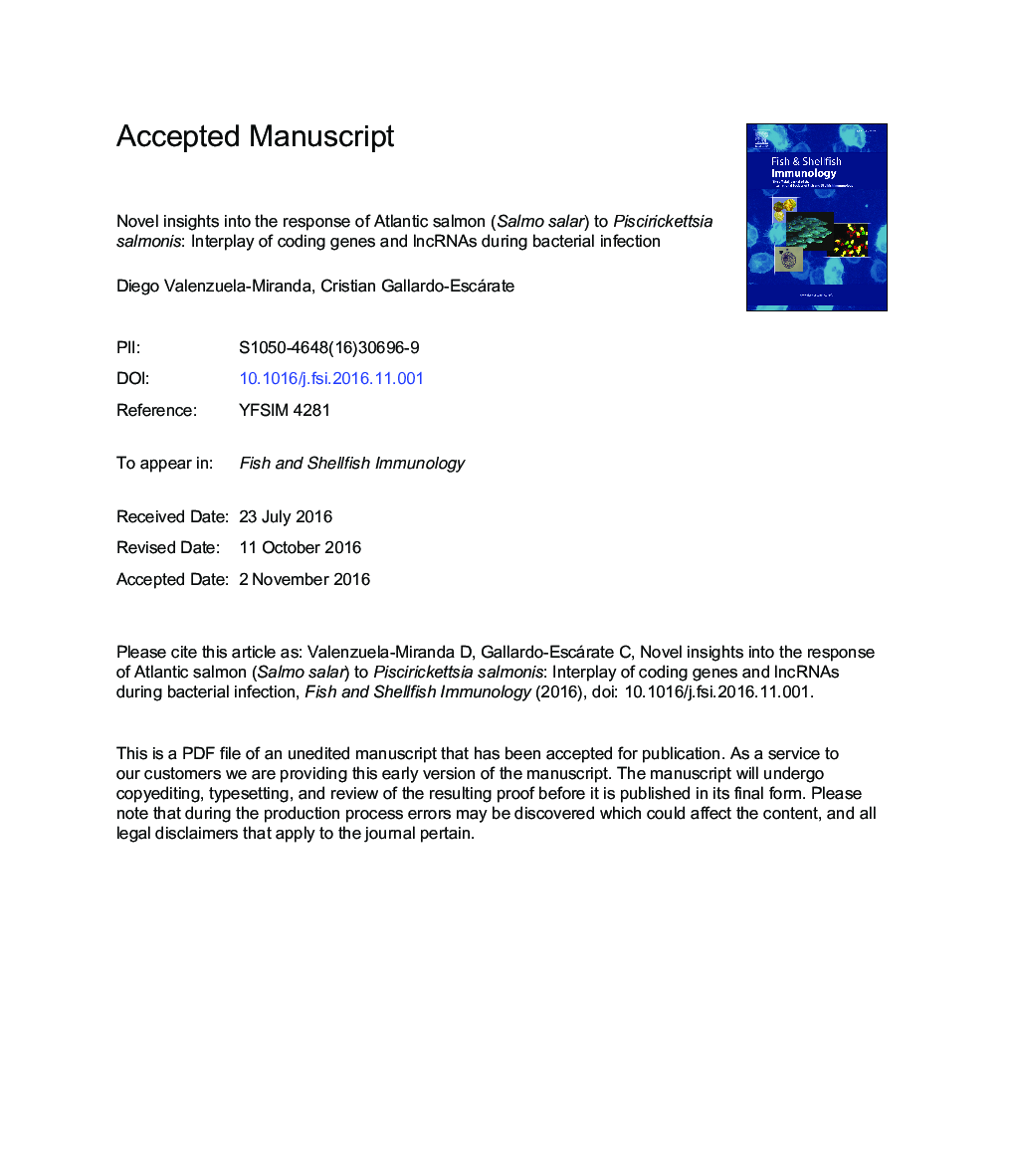| Article ID | Journal | Published Year | Pages | File Type |
|---|---|---|---|---|
| 5540807 | Fish & Shellfish Immunology | 2016 | 34 Pages |
Abstract
Despite the high prevalence and impact to Chilean salmon aquaculture of the intracellular bacterium Piscirickettsia salmonis, the molecular underpinnings of host-pathogen interactions remain unclear. Herein, the interplay of coding and non-coding transcripts has been proposed as a key mechanism involved in immune response. Therefore, the aim of this study was to evidence how coding and non-coding transcripts are modulated during the infection process of Atlantic salmon with P. salmonis. For this, RNA-seq was conducted in brain, spleen, and head kidney samples, revealing different transcriptional profiles according to bacterial load. Additionally, while most of the regulated genes annotated for diverse biological processes during infection, a common response associated with clathrin-mediated endocytosis and iron homeostasis was present in all tissues. Interestingly, while endocytosis-promoting factors and clathrin inductions were upregulated, endocytic receptors were mainly downregulated. Furthermore, the regulation of genes related to iron homeostasis suggested an intracellular accumulation of iron, a process in which heme biosynthesis/degradation pathways might play an important role. Regarding the non-coding response, 918 putative long non-coding RNAs were identified, where 425 were newly characterized for S. salar. Finally, co-localization and co-expression analyses revealed a strong correlation between the modulations of long non-coding RNAs and genes associated with endocytosis and iron homeostasis. These results represent the first comprehensive study of putative interplaying mechanisms of coding and non-coding RNAs during bacterial infection in salmonids.
Keywords
Related Topics
Life Sciences
Agricultural and Biological Sciences
Aquatic Science
Authors
Diego Valenzuela-Miranda, Cristian Gallardo-Escárate,
